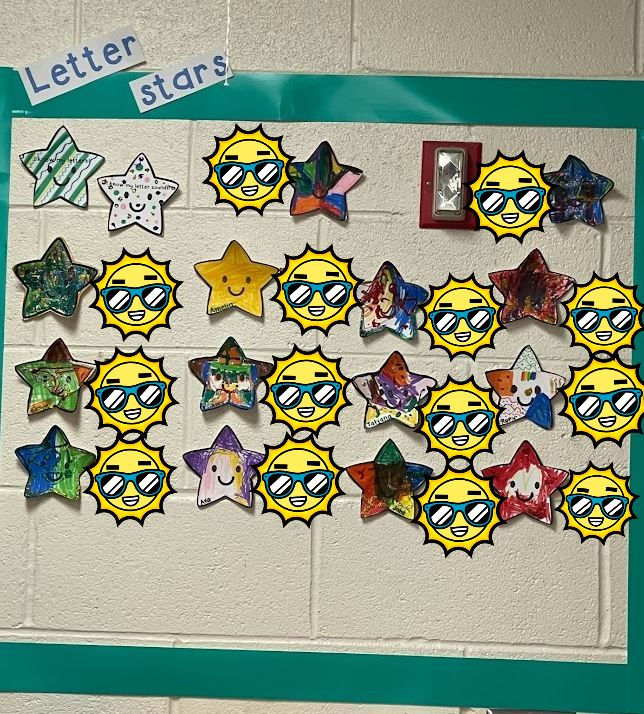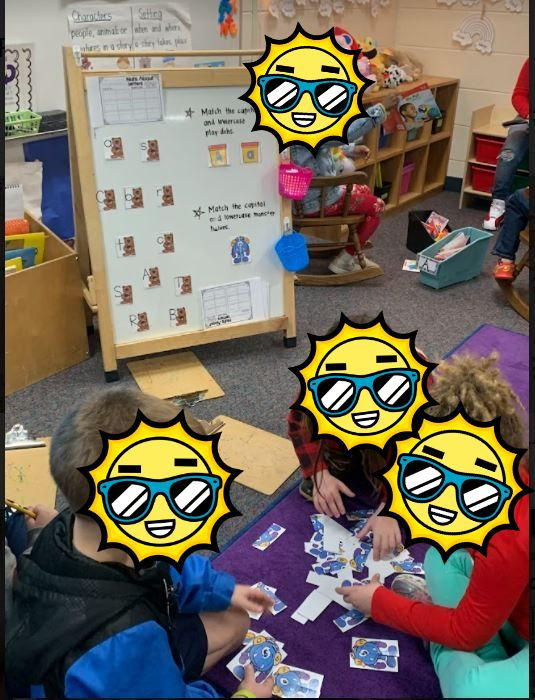Owning Learning In Kindergarten: A Chat with Jennifer Shea
- personalizedlearning
- Mar 24, 2022
- 5 min read
Jennifer Shea, a Kindergarten teacher at Westview Primary School in Berkeley County School District discusses how she personalizes learning for her students. Learn more about how Jennifer began her journey towards personalizing learning and how she tends to the culture and the learning environment in a way that empowers the "little humans" she serves!
When it comes to the work of student-centered learning and personalized learning, a common misconception we hear is that this kind of learning can only work in certain populations, such as older students. What might you say in response?
I honestly think it’s easier in kindergarten. I've taught kindergarten for 8 years. I feel we already make it personal in some way. We do so much of our day in rotations. I group my kids based on what they can do and can’t do, and then I focus on teaching those skills. So I feel we already make it personalized. I feel like personalized learning is geared towards little people as well.
Tell us about how you got started in this journey.
Our school works with Marie Watson from reDesign, so I was told that I would be working with her, which was fine with me! I always want to learn new things. I jumped in with her and started slowly. You have to do one thing at a time, especially with everything going on with COVID. So I focused on one thing first, the class pledge, and what that meant. It was easy to teach my kids about it, because I explained that we do the Pledge of Allegiance every morning. So what does that look like as a class pledge? We started there, and then we implemented data binders now and a data wall now too. I started small and slowly added in other components as I went.
Tell us more about the class pledge.
Since they are five years old, we kept it child-friendly. We talked about, “What does it mean to make strong choices at school?” and “What does a learner look like?” Having those conversations openly with them and what are our expectations for our class at school was important. We came up with one together that has user-friendly language for the little people.
Our pledge is:
In our class we promise to do our best every day.
We will respect our friends and our teachers.
We will learn every day.
They will remind me too: “Mrs. Shea, we didn't say our pledge!” They’re very committed to it. Then we broke it down, asking, “What does it mean to respect our friends? What does it mean to respect our teachers?” So with some guidance with certain words, they know what it means now. They can tell you what it means and what it looks like. They can reflect, “No, I wasn't respectful to a friend” or “No, I’m not doing my best today.” They show ownership with it. It was definitely a process.
It sounds like you’re addressing the culture of your room before you address content.
It may seem harder in later grades to spend that time building community. But this is all new, and this classroom is their home away from home. We are a family here. We even signed the pledge and I posted it in our room. I explained to them not to sign it if they weren't committed to it. We hold each other accountable, and they want everyone to succeed.
It’s important to let them know that it’s fine wherever you are, and we celebrate wherever you are as you learn at your own pace.
You mentioned data binders and notebooks. How can we personalize learning while infusing data? How do you use data in your kindergarten context?
We started with letter recognition. Some of my kids got their letters quickly. So I started with a big sheet with the block letters and they colored in the ones they knew. They would graph how many letters they knew. I would ask, “The next time we meet, which ones do you want to know next?” As we taught the letters, kids would come back to their binder and color in the new ones they knew.
We make everything a celebration. Once they colored in all of their letters, they got to have a letter star on the wall. Once they know their letter sounds, they get to put glitter on the star. So that pushes them. Once they see they can achieve a goal, they want to keep going. I have kids coming to the classroom first thing in the morning saying, “I know my red list for rainbow words,” and they want me to test them right then. They see it on the wall. So it’s not just their binder. As visual people, they see they only have the purple arc colored in their rainbow, and they have that motivation to push them to know more words.

How do you cultivate that agency and responsibility in the students in your classroom?
We have a lot of choices. In our classroom library, for example, they can choose books, they can build their rainbow words with magnetic letters, or they can get flashcards and practice that way. So if they prefer to read for the day, or prefer to listen to a story, it’s up to them to choose what they want to do. Then they look at their peers working on their orange words, and if they have only their red words, they want to push a little more when they see what their peers are doing too. I have some high flyers and they'll invite others to work with them on their high frequency rainbow words, which is some great collaboration.

What are some ways you promote a growth mindset with your students?
We continue to celebrate. I still have kids working on their letter sounds, and I have kids who know half of their rainbow words. My kids take the time to celebrate each other, no matter where they are. If they make their goal, they congratulate each other. It’s important to let them know that it’s fine wherever you are, and we celebrate wherever you are as you learn at your own pace. They can see with our data wall of who to go to for help in their class, and they do help each other. They are a supportive community.
What does goal setting look like for kindergarteners?
I think there's more teacher guidance in goal setting in kindergarten and then they get the hang of it. They know the red list is the easiest and then orange and yellow. I have the data wall in order of what we are trying to work on. For math, we have counting to 100 by ones and then by fives and tens. If I have a child who wants to work on knowing rhyming words based on a mini lesson, then I listen to them and follow that goal for them.
Learn more about how personalized learning can look in kindergarten by listening to more of Jennifer’s conversation with us here:

Comments